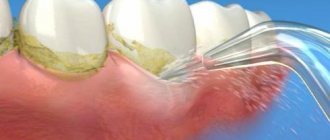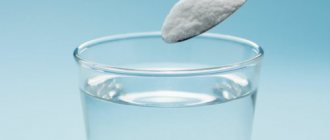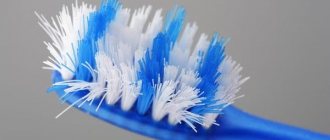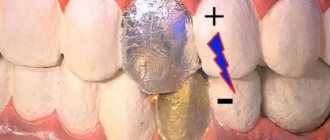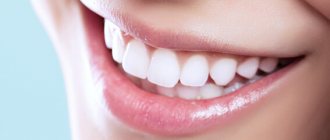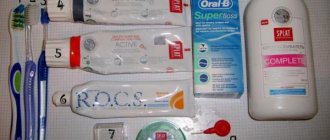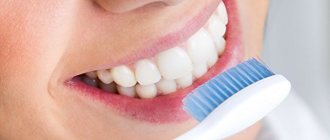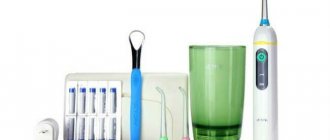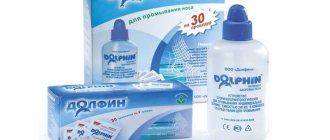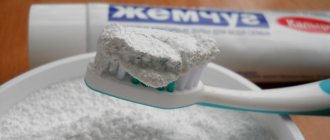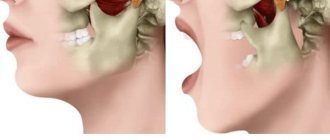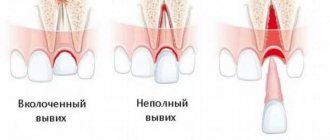Purpose of the irrigator
A device for cleaning teeth and gums, such as an irrigator, helps to effectively remove up to 99% of dirt and food debris that a regular brush and paste cannot handle. The fact is that water or liquid, which is supplied through the nozzle of the device into the oral cavity, penetrates into the most inaccessible areas: interdental spaces, periodontal pockets, as well as under various orthodontic and orthopedic structures.
The device not only removes soft plaque, but also gently massages the mucous membrane, normalizing blood circulation and metabolic processes in it. Unlike floss, it does not injure her. And, as you know, healthy and clean gums are the key to the safety of teeth in the oral cavity. Indeed, in the presence of uncleaned food debris, bacterial plaque and a constant traumatic factor, the mucous membrane becomes inflamed, first gingivitis develops, then periodontitis, leading to the destruction of the ligamentous apparatus of the teeth, and, as a consequence, to their loosening and loss.
Cleaning your teeth at home with an irrigator will make your breath fresh and ensure the proper level of cleanliness for dentures and braces. This will be an excellent prevention of caries and periodontal diseases. The use of this semi-professional installation will help normalize the function of the salivary glands.
In what cases are irrigators used and who will benefit from it?
For your information! The irrigator is designed to maintain oral hygiene. Experts recommend using the device to clean teeth, prevent and combat gum disease.
The operation of the device is as follows: the surface of the tooth is exposed to a jet of water , i.e., hard-to-reach places are cleaned of food particles.
Correct and regular use of the device reduces the likelihood of plaque formation by 25%, increases the effectiveness of teeth cleaning by 50%, refreshes and cleanses the oral cavity.
It has been proven that such a device
90% more effective than dental floss .
Irrigators are used for :
- Micromassage of gums. The effect of liquid under pressure on the gums increases local blood circulation. This factor is especially important for those suffering from periodontitis;
- Cleaning crowns and braces. A stream of water will clean out all deposits and plaque formed under dental structures; you must agree that toothbrushes and floss cannot cope with this;
- Deodorization and disinfection of the oral cavity. The devices can be filled not only with water, but also with special antiseptic liquids that will have a bactericidal and anti-inflammatory effect.
Keep in mind! There are different types of irrigators; devices with microbubble cleaning and a pulsating operating mode that “push out” deposits and dirt are effective.
Dentists recommend using these devices for everyone, because... Everyone, without exception, needs oral hygiene, a pleasant fresh smell and healthy gums.
the devices :
- As a prevention of caries and periodontitis;
- Smokers;
- Patients with reduced immunity;
- To prevent bad breath;
- In the presence of chronic pericoronitis;
- Nursing mothers.
Indications and contraindications for use
An irrigator is an indispensable semi-professional device for cleaning teeth in the presence of crowns and dentures, bridges, and dentures on implants in the mouth1. It will become a valuable assistant in the daily fight against plaque for those people who have braces installed.
The indication for purchasing a device can be considered your desire to have well-groomed, healthy teeth and gums. Its use is necessary for those who have a malocclusion, crowded dentition, gingivitis, or periodontitis. It will be an excellent assistant for carrying out daily hygiene procedures for pregnant women and the elderly.
As for contraindications, they exist: acute inflammatory process on the mucous membrane, the presence of open wounds, ulcers and ulcers. The device cannot be used after surgical interventions, for example, after tooth extraction, bone augmentation or implantation. However, after the tissues have healed, you will need to return to using the irrigator.
On a note! Some experts argue that the device should not be used by persons with cardiovascular pathologies and those who have an artificial heart valve installed. The limitation is due to the fact that it creates small vibrations, which can be harmful to the condition of such patients. If you have such problems, it is better to consult a doctor before purchasing.
A few words about the types of irrigators
Many people are interested in which irrigator is better to choose. In this matter, you need to take into account the fact that they are different. The differences are not only in brands and configurations, but also in size and power supplies of the device. And here everyone decides for himself what is more convenient for him.
For example, a dental irrigator can be portable. It is small in size and runs on batteries. This variety is often chosen by people who spend a lot of time on the road, travel and business trips. It easily fits into a travel bag or backpack. You can use it outdoors, and you don’t have to look for a room with an outlet to carry out the cleaning procedure.
On a note! Irrigators differ in their operating principle. There are monojet, pulse, microbubble. With mono-jet cleaning of the oral cavity occurs due to the continuous supply of water - this type is considered obsolete. In pulsed mode, the water jet pulsates, which makes cleaning more effective and safe, and has a stimulating effect on the mucous membranes and soft tissues. Microbubbles supply liquid saturated with oxygen - this provides a light massage and antibacterial effect.
The stationary model is a dental irrigator for the whole family. This variety has a large water tank. Equipped with different attachments and a container for storing them, it works from a power outlet.
Another type is a flow-through dental irrigator. True, this model is considered outdated and not very convenient to use. It is connected to the water supply, and the condition for effective oral care is high quality tap water, which cannot be achieved without the use of special filters.
Oral irrigators: review of models
Various innovations designed for oral care are constantly appearing on the shelves of stores and pharmacies. One of them is an irrigator. Most often, patients who have various structures in their mouth, such as dentures or braces, choose this device. These devices make hygiene difficult and increase the risk of developing various dental diseases, such as gingivitis, periodontal disease, caries and others. An indispensable assistant for caring for teeth with installed braces is an irrigator. The device is designed specifically to solve the problem of cleaning hard-to-reach areas of the oral cavity. There are many different models of the device, each with its own advantages in each specific case. When choosing, you should give preference to well-known and trusted manufacturers.
Aquajet ld a7
The latest device designed for high-quality cleansing of the most inaccessible areas of the mouth. The irrigator is multifunctional and, while performing its direct cleansing function, simultaneously massages the gums, improving blood circulation in them. The device is easy to use and durable. Various water supply modes allow you to regulate the hygiene process. A stream of liquid is supplied to the oral cavity with pulsation, which ensures high cleaning efficiency. The oral mucosa and gums become healthier, freeing themselves from accumulations of plaque and bacteria. Plain water, special solutions, dental rinses or decoctions of beneficial herbs are used as a liquid for the irrigator. Aquajet ld a7 provides high-quality oral cleansing at an affordable price.
Waterpik wp 100 e2 ultra
The irrigator of this brand is a high-quality device with all modern characteristics. Water or solution from the irrigator is supplied under pressure, cleaning even the slightest impurities that are not visible to the eye. The liquid stream, as in the previous device, pulsates, which means excellent surface cleaning quality. The pulsation is up to 1200 pulses per minute. During the treatment, plaque is not only removed, but also has a healing effect on the gums. This is a good prevention of the development of inflammatory processes and periodontal diseases. The power of the device can be adjusted in accordance with the available 10 modes. The liquid container in the device can hold 600 ml. Waterpik wp 100 stands out for its small dimensions and memorable design. Users note the ease of use of the device and exceptional reliability. The irrigator allows home dental care to reach a level that is as close as possible to professional hygiene in the dentist’s office. The device operates from a 220V network.
Braun oral b professional care md20
This device under the Oral-B brand is distinguished from other devices of this company by its bright modern appearance. The functionality of the device is the same as that of previously released models. Effectively removing food debris and plaque, cleaning braces and dentures, disinfecting the oral cavity - the irrigator copes with all these tasks successfully. The main liquid for the device is purified water, but the use of special medicinal solutions is also allowed. This model has been tested in the treatment of diseases such as gingivitis, halitosis, periodontal disease and others, successfully coping with exacerbations of conditions, as well as helping to cure chronic forms of diseases.
Bwell wi 911
This oral irrigator is portable. Compactness and ergonomics allow you to enjoy using the device on the road. You can always carry it with you, which is an excellent option for patients with installed braces. Braces require you to carefully monitor hygiene and brush your teeth after every meal. A portable irrigator allows you to effectively clean your teeth at any time of the day and prevent the accumulation of germs in places inaccessible to a toothbrush. The device has 3 operating modes and runs on a rechargeable battery.
Ves vip 003
This device, on the contrary, refers to stationary irrigators. It is distinguished by high functionality and quality of cleansing the oral cavity. If you use the device constantly, your breath will always be fresh and your gums will be healthy. A jet of water under pressure removes the smallest particles of remaining food, including from subgingival pockets where it is impossible to reach with a brush. This serious device comes with 9 replaceable nozzles and a 650 ml liquid container. The device is distinguished by convenient storage of tips, as well as high power, while remaining relatively affordable.
This image shows irrigators from various manufacturers, but despite the variety of types, they all help to care for the oral cavity, clean crowns and braces, and rinse periodontal and gum pockets at home.
Donfeel or 820m
A new device equipped with various attachments to achieve high results in cleaning the oral cavity. The device is stationary and connects to the network using a long cord (1.35 m), which is very convenient. One of the nozzles included in the kit is suitable for nasopharyngeal rinsing procedures. This makes the device multifunctional, and it is recommended for use not only by dentists, but also by otolaryngologists. Effective lavage of the nasopharynx is the basis for the treatment of many diseases of the ENT organs. The irrigator's arsenal includes a tongue cleaning attachment, 2 standard attachments and 3 periodontal tips. The variety of functions performed by the device is supported by its relatively affordable price range.
Panasonic ew 1211
The device is one of the latest improved models from this manufacturer. The irrigator runs on a metal hydride battery, which provides an impressive service life. The battery is charged within 8 hours. A full charge lasts up to 2 weeks of use. The device is a compromise between travel and stationary devices. It is compact, ergonomic, but at the same time performs a large number of functions, maintaining a high level of oral cleansing. The Panasonic ew 1211 irrigator is very popular among consumers due to its versatility, modest dimensions and ergonomics. The quality of the device is at a high level, thanks to innovative assembly technologies used by the global manufacturer. The kit includes a charger and 2 attachments. It operates in three liquid supply modes, including pulsation and microbubble technology. The liquid capacity is relatively small (130 ml) due to the compactness of the device. It is intended to use clean filtered water in the device.
Recommendations for safe and effective use of the device
Cleaning the oral cavity with an irrigator should be carried out according to the instructions for use. We will talk further about how this is done correctly. To begin with, we will give some tips and recommendations to ensure that your first acquaintance with the device and its subsequent use are safe and effective.
General recommendations:
- use the device in comprehensive oral care: that is, not instead of a brush, paste and rinse, but only together with them. Remember that an irrigator is not an independent tool, it does not replace, but only effectively complements all the others,
- Start getting acquainted with the device on the lowest setting: this will help your gums and teeth get used to new unusual sensations and avoid discomfort. As you get used to it, the water pressure can be increased,
- if you have braces, crowns, bridges and dentures, you need to clean not only in the morning and evening, but also after meals,
- You cannot use floss before the irrigator: if you floss carelessly, you can damage your gums, and then subsequent cleaning can aggravate their condition,
- when a stream of water is applied, it is better to keep your tongue raised up: then the liquid will not enter the stomach and lungs, but will pour out,
- if you experience pain, then you need to stop cleaning or adjust a more gentle mode,
- Each family member has their own replaceable nozzle, but there can only be one device,
- the cleaning procedure for children should only be carried out under the supervision of parents: there are “children’s” models suitable for use in children over 3 years old, but doctors do not recommend using the device until the child is at least 6 years old,
- if there is acute inflammation of the mucous membrane or bleeding that does not go away within 3 days, then you must stop using the device until you consult a doctor,
How to use an irrigator correctly?
The procedure for cleaning teeth and interdental space with an irrigator is quite simple. The operating instructions for the device often contain a detailed description with illustrations. An important point is the correct position of the device during cleaning. It should be held at a 90 degree angle to the surface of the teeth.
Also, you should not swallow the water remaining in your mouth after brushing, so during the procedure you need to keep your head tilted over the sink or bathtub. However, even special solutions for irrigators do not contain substances that are unsuitable for oral consumption.
It is important to know! The wrong choice of liquid to pour into the irrigator can significantly worsen the health of your teeth.
Typically the procedure lasts about 10-20 minutes. The final amount of time depends on the degree of contamination of the oral cavity.
Another important rule in operating the device is the use of individual attachments for each family member. To avoid confusion, manufacturers mark them with different colors.
The stream from the irrigator should be directed at an angle of 90 degrees. to the dentition.
What liquid to use
There are two types of liquids for irrigation:
- Professional;
- Household.
The first option is usually used by dentists. Professional liquids are used to treat the oral cavity after various operations, since they contain various antiseptic agents. In addition to the postoperative period, such solutions are used for diseases of the oral cavity in conjunction with other procedures.
Important! Professional liquids are not suitable for home use, since the dose of the solution can only be calculated by a person with specialized medical education.
Household liquids can be found on the counter of pharmacies and other stores. They are produced by various companies and brands. They are also divided into several categories depending on their purpose:
- To strengthen tooth enamel;
- Against bleeding gums;
- To eliminate bad breath.
There are also special solutions for allergy sufferers.
Household liquids contain water and other substances that support oral health.
How to treat the oral cavity
Before using the irrigator, you must brush your teeth with a toothbrush and paste.
This should be done to remove large food particles. It is impossible to thoroughly clean the mouth with one device, so it is imperative to begin the procedure with mechanical cleaning with a toothbrush. The stream of liquid should be directed from top to bottom so as not to damage the gums. Many manufacturers include a disc with video instructions with their products. With its help, the user will be able to prevent common mistakes and avoid unpleasant consequences.
Typically, irrigators are equipped with a pressure regulator. At the beginning of irrigation, it is worth using the minimum values, increasing them towards the end of the procedure. Thus, teeth and gums gradually adapt to the pressure of the jet.
The front teeth are cleaned first, followed by the back teeth. In this case, special attention should be paid to the back teeth, since after mechanical cleaning, the most food residues and microbes remain in this area.
Advice! You should not use dental floss before irrigation, as there is a possibility of damaging the gums, and using the device will only worsen the situation.
How many times a week can you use the device?
The number of irrigation procedures depends on the purpose of using the device. If the device is used for preventive oral hygiene, then cleaning should be done no more than 2-3 times a week. This is enough to keep your mouth clean and healthy.
If you plan to use the device for therapeutic purposes, you must consult a doctor before using it.
He will help you create the right schedule for procedures and give other oral care tips depending on the existing problems.
What absolutely should not be done when using the device
- do not turn on the device if there is no liquid in the tank,
- you cannot use one nozzle for all family members,
- Do not tilt your head back while cleaning: hold it in such a way that water flows out freely,
- Cleaning should not be carried out in the presence of acute inflammatory processes in the mouth and immediately after surgical interventions,
- Do not pour too cold or hot water into the tank: the liquid must be at room temperature, otherwise you can injure the enamel and burn the oral mucosa.
The best way to refill the device tank
What is the best dentifrice to put in the reservoir? The liquid, first of all, must have a comfortable temperature. To cleanse the oral cavity of plaque and food debris, filtered or distilled water is suitable - it will do the job well and will not damage the parts and “insides” of the device. If you use running water from the tap, then it is better to settle it before use, because the quality may be quite poor, it may contain various impurities, sand particles, debris - all this can become clogged in the device and lead to a malfunction.
Important! Read the instructions carefully before use. There are models in which it is forbidden to pour anything other than ordinary water, in which case various balms and rinses can lead to premature failure of the device.
If the goal is not only to remove contaminants, but also to have a therapeutic effect on the enamel and gums, then, depending on the problem, you can select a specialized liquid with a hemostatic, strengthening, and antiseptic effect. When choosing a composition, make sure that it is specialized and suitable for your device. But you should not experiment with decoctions of various herbs - if you do not strain the decoction well enough, then particles of herbs and plants may subsequently become clogged inside the device, and not every model can be disassembled and cleaned.
Remember that when using specialized liquids, foam may form, so after hygiene procedures the tank will need to be rinsed with water.
Using different liquids
So, you have figured out how to use the device itself. Now let’s talk about what is the best way to fill the irrigator’s container. The simplest option is water. It can be simply tap water, boiled or filtered. It all depends on what comes out of your bathroom faucet. Water is a universal solution that is suitable if the goal is simply to brush your teeth.
What is poured into the container?
A completely different question is therapeutic and preventive procedures. Now you can buy ready-made liquids for irrigators. They may include:
- Miramistin – antibacterial and antifungal component;
- fluorine compounds - allow you to protect the enamel;
- extracts of medicinal plants – provide an anti-inflammatory effect, eliminate bad breath;
- chlorhexidine is an antiseptic. Dries out the mucous membrane, so it is not suitable for daily use;
- compositions for remineralization of tooth enamel. Unfortunately, they are not effective with such rapid contact.
Albadent - liquid for irrigator
Liquids and balms for irrigators are produced by different brands. The following can be found on the CIS market.
- Albadent - normalizes pH in the mouth, contains useful plant extracts, heals small wounds on the gums, helps prevent caries and periodontal diseases.
- Irix - contains fluorides, alum, potassium citrate and miramistin. Effective protection of teeth and gums.
- Donfeel “Comprehensive protection” – contains calcium and fluorine in active forms, extracts of chamomile, sage and St. John’s wort.
- Professor Persin - available herbal and antiseptic, with chlorhexidine.
Irix - liquid for irrigator
Prices vary, from 5 to 40 dollars per bottle. The price depends on the volume, composition, manufacturer. If the brand is well-known, you will have to pay a decent amount.
Some people simply strain herbal infusions, which can be no worse than store-bought counterparts. However, when making your own liquid for irrigators, do not forget that you may be allergic to the components. Another disadvantage of homemade products is that microparticles of plants from your “potion” can become clogged inside the parts. Not every model can be disassembled and cleaned, and some cannot be serviced or repaired at all. Therefore, treat the issue of filtration responsibly.
Ordinary water also contains sand, debris, and dirt. It would be hard to call such a procedure hygienic. It is recommended to settle, or better yet, filter the water for the irrigator. Select the optimal temperature based on your personal feelings. It shouldn't be too hot or cold. Otherwise, you can harm your gums.
Mouth rinse balm is poured into the irrigator
There are models in which it is strictly forbidden to use anything other than ordinary water to fill the tank. That is, such devices cannot be filled even with special liquids intended for irrigators. Be sure to read the instructions before use. It should clearly indicate whether the use of balms and rinses is allowed. From the point of view of dentists, adding such compounds to water is useful, but the design features of the device may not provide for such an opportunity.
Please note that rinses added to water may create foam. It is harmful to equipment, so after completing the procedure, rinse the product with plain water.
Dental irrigator
Typically, information on how to use the irrigator is indicated by the manufacturer on the packaging or on an additional insert. Serious manufacturers write multi-page manuals that contain data on what not to do to prevent the device from breaking.
5 best irrigators:
| Name | Description | Price |
| Aqvajet LD-A7 | The Aqvajet LD-A7 irrigator is manufactured in Singapore by Little Doctor. Pros:
Minuses:
| 2950 rubles |
| Waterpik WP-100 | It has microbubble, ten-level pressure power. Pros:
Minuses:
| 6800 rubles |
| Philips AirFloss Ultra | It has 3 modes - for people with different gum sensitivity. Pros:
Minuses:
| 6800 rubles |
| Waterpik WP-450 | The irrigator from the American company Waterpik is very popular due to its combination of miniature and power. Pros:
Minuses:
| 5450 rubles |
| Panasonic EW-DJ10 | The best portable irrigator, convenient, cleans teeth where it is impossible to reach with a toothbrush. Pros:
Minuses:
| 2750 rubles |
We hope that the material we collected was really useful to you. Now you know how to use an irrigator and how to choose special liquids for it. If you have any comments, write, we will be glad to read it! After the filling, when can you eat and drink, read the information at the link.
Step-by-step instructions for brushing your teeth with an irrigator
In this section of the article we will consider in detail how to use the device correctly.
Step #1. Fill the reservoir with liquid.
Step #2. Install the attachment you need. Remember that it must be individual for each family member.
For people with braces and dentures, the attachments must be orthodontic; these are usually included with stationary models, or they can be purchased additionally. Specialized nozzles are excellent not only for washing hard-to-reach areas, but also for processing elements of braces, for washing out food debris and bacteria from under orthopedic structures.
For some patients, doctors may recommend the use of periodontal tips, which are suitable for high-quality removal of dirt from periodontal pockets.
Make sure the nozzle is firmly in place. Usually, when installed correctly, you can hear a characteristic click.
Step #3. Set the required water pressure. For beginners and people with inflammation of the mucous membrane, it should be minimal.
Step #4. Connect the device to a water supply or outlet (depending on the type). If you have a stationary model, then it is necessary that it has a stable position and does not fall during the procedure.
Step #5. Bend over the sink or bathtub. Place the tip of the device in your mouth and press the button on the handle of the device.
Step #6. Clean all easily accessible areas first, then brush between the teeth, holding the brush head in the cracks and gaps for a few seconds to allow water to pass through. Move the nozzle from one area to another, do it smoothly, without sudden movements.
You should start cleansing from the upper jaw, then you can move on to the lower jaw. For convenience, experts suggest visually dividing the oral cavity into four sections and treating each section for at least 30 seconds.
If you have bridges or prostheses installed on implants, then the irrigator nozzle must be directed into the flushing space of the prosthesis.
Step #7. Turn off the device, unplug it, remove the attachment and place it in a special storage case.
We also invite you to watch a useful video on how to brush your teeth with an irrigator.
What are irrigators needed for? The practical side of the issue
An ordinary person thinks simply. If he has a brush with toothpaste, dental floss, and some kind of herbal mouthwash, he feels almost invulnerable. But the thread can’t get into every area where food might get stuck. As for the brush, it copes with surface deposits and nothing more.
Irrigators can improve the effectiveness of oral care. They have a simple design and can be equipped with interchangeable nozzles of different shapes. Also in modern models, the supply of water and sometimes air is regulated. Water is stored in a built-in container. In compact devices, such a reservoir is small and located directly in the handle. In stationary models, the container is mounted separately. It can be placed on a washbasin or mounted on a wall. Usually fastenings are provided for this.
Stationary irrigator
Water is supplied either by pressure (old models) or by pulse points. Such micro-impacts do not harm teeth or gums, but they make it possible to more effectively remove dirt from the surface of teeth, gums, interdental spaces, and even from periodontal pockets. At the same time, the gums receive additional stimulation, which has a beneficial effect on their condition. The effect can be compared to a light massage of periodontal tissue.
Separately, models equipped with nasal attachments should be considered. As you might guess, they are used to rinse the nose for viral bacterial and allergic forms of rhinitis, sinusitis and other diseases. The instructions for the device usually indicate how the procedure is performed.
Types of irrigators
If you regularly wear fixed dental appliances to correct your malocclusion, ask your orthodontist how to use a irrigator to maintain them. He will explain how to direct the water stream where the most organic “garbage” can accumulate, and how to remove contaminants effectively and quickly.
Video - What is an irrigator for?
Frequency of use of the device
If your teeth and gums are healthy and there are no dental diseases in your mouth, then the device should be used on an ongoing basis. At least several times a day - morning and evening. Use only in combination with other products (brush, paste, rinse). If you have braces or dentures, it is recommended to use the device after every meal or snack.
If there are inflammatory processes on the mucous membrane, the issue of using the device should be resolved individually and only on the basis of the recommendations of the attending physician.
“My Waterpik irrigator, it works great and hasn’t broken for more than 3 years. I bought it immediately after getting braces. I liked that the kit included an orthodontic attachment. During bite correction I used it every day, and when the braces were removed, on the dentist’s recommendation I used it 3-4 times a week, but with a standard attachment. I noticed that after it I less often need professional oral hygiene, because... Less plaque accumulates, and this is very pleasing!”
Liliana, review from the dental portal gidpozubam.ru
If you have recently undergone surgery to install implants or remove a tooth, then you should stop using the device for an average of 2 weeks, but for some the ban lasts longer - it all depends on the clinical situation and the tissue healing process. Your dentist will give you advice on when to return to using the device. It is recommended to start using the installation again at minimum speed.
Advantages and disadvantages of using an irrigator
The owner can get both pros and cons from using the device. If you use it correctly and according to the instructions, it will help remove up to 99% of all contaminants, help eliminate soft bacterial plaque, and prevent the formation of hard mineralized deposits.
The device will help maintain fresh breath, because... Tiny food particles will not get stuck between the teeth, which rot and cause halitosis. Another advantage is a gentle massage of the mucous membrane, its nutrition, and improved blood circulation in the gums. Well, and, of course, the prevention of dangerous dental diseases: gingivitis, periodontitis, caries, pulpitis.
As for the shortcomings, they can only arise due to the fact that you use the irrigator incorrectly or bypassing contraindications. So, if you make sudden, chaotic movements with it, or turn on a speed that is too high for you, it can lead to exposure of the sensitive necks of the teeth, the formation of periodontal pockets, and contribute to the appearance of cracks in the enamel. If you use it during a period of exacerbation of inflammatory processes or after surgery, then damaged tissues can be further injured, interfere with their regeneration process, and cause severe discomfort and pain.
